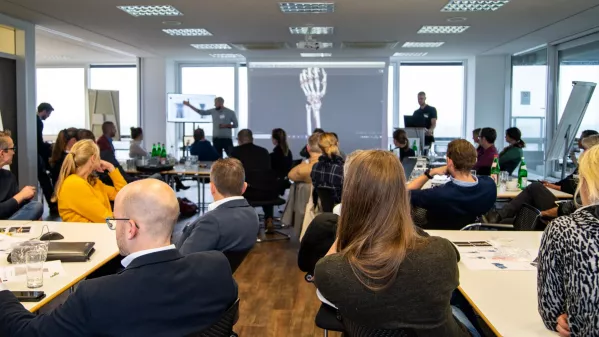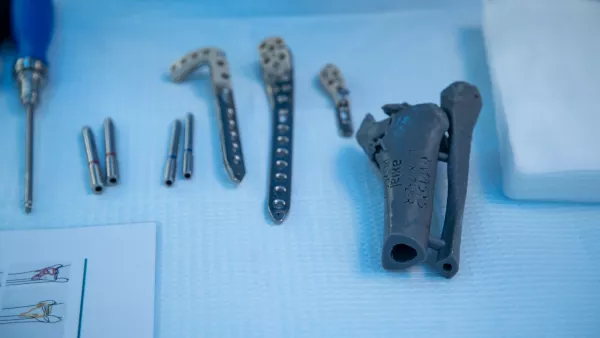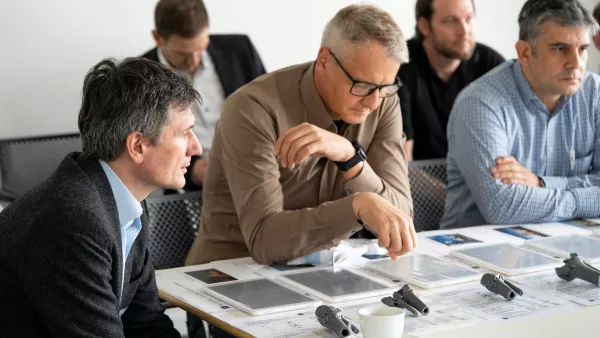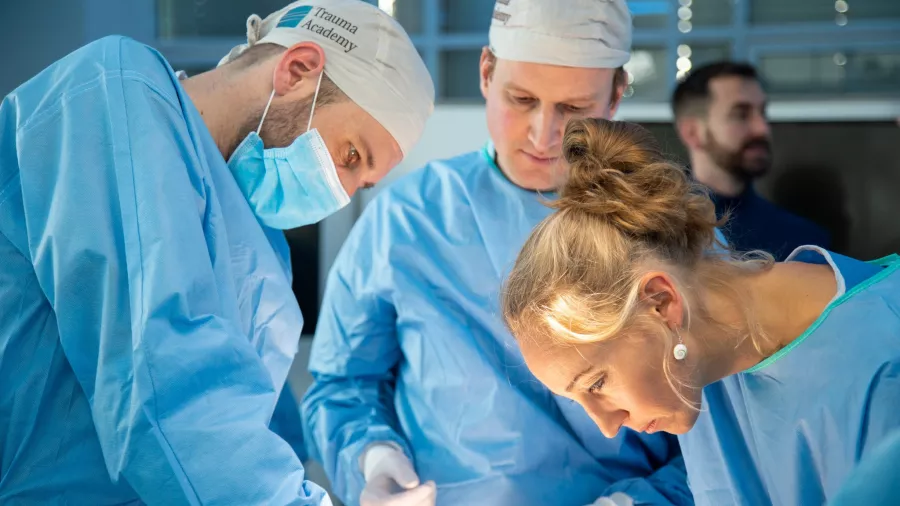Lifelike Fracture Simulation with 3D Printing at Trauma Academy
Trauma Academy by RIMASYS provides orthopedic and trauma surgeons with hands-on surgical training courses, led by world renowned instructors in a world-first, safe and practical, hyper-realistic training environment. Working in groups and independently, participants perform surgery on pre-fractured human specimens, in one of the most realistic OR training experiences on the planet.
The Trauma Academy courses give surgeons a unique opportunity to train their treatment approaches and decision-making processes from planning, to surgery, right through to the final post-surgery X-ray in one single course.

Innovation runs deep in the concept of Trauma Academy’s ’Lifelike Fracture Simulation’. From the machines that utilize biomechanical algorithms to generate fractures on the human specimens, to the course structure, right through to the diagnostic technology - including VR segmentations and 3D printed replicas of the fractured specimen. This is where Axial3D comes in.
Specific fracture causes, such as falling off a bike, are simulated by machines using biomechanical algorithms. CT scans taken from the fractured specimens are then sent to Axial3D, where 3D models are generated using advanced machine learning algorithms. Both virtual and physical 3D models of the fractured specimens are then returned to Trauma Academy, where they are used by the course participants to organize, define, operate and challenge their surgical plans.
Axial3D’s unique machine learning algorithms for trauma fractures ensures the fastest turnaround times for Trauma Academy, regardless of the amount of datasets or complexity of the fractures sent through.

For the organizers at Trauma Academy, running the courses without enhanced imaging techniques, such as the 3D segmentations and 3D printed models, is simply not up for discussion.
“The Trauma Academy combines the most innovative technologies to provide a realistic OR scenario. At the point when the 3D printed models are introduced, the participants will already have had the X-ray and CT scans for around 20 minutes, giving them time to begin defining which type of procedure they will carry out.” says Judith Pfeiffer, General Manager at Trauma Academy.
RELATED: 3D printed trauma model enhances surgical simulation in leading European training academy

“When the 3D printed replica of the CT scan is produced, around 50% of the participants entirely change their approach to how they plan to surgery because then they're seeing it from a completely different angle. In some instances, the surgeons take the 3D model into the practical sessions as their main imaging tool, referring to it throughout the procedure.”
Feedback from the surgeons participating in the courses show that the 3D models remove variability between each surgeon, support increased confidence of a good surgical outcome and aid more enhanced discussions between the participating surgeons.
“Of course, you can draw something on a flip chart or you can show the X-rays, but having a 3D model really helps surgeons to explain and discuss these complex fractures in a way that is just not possible with conventional 2D images because it removes the need to imagine or visualize the fracture in their heads, it’s right there in front of them!”
Upcoming Trauma Academy courses can be found and booked here
Try medical 3D printing in your organization
Try Segmentation-as-a-Service completely free of charge below!
Why not try our segmentation-as-a-service completely free of charge.
Request a free visual




